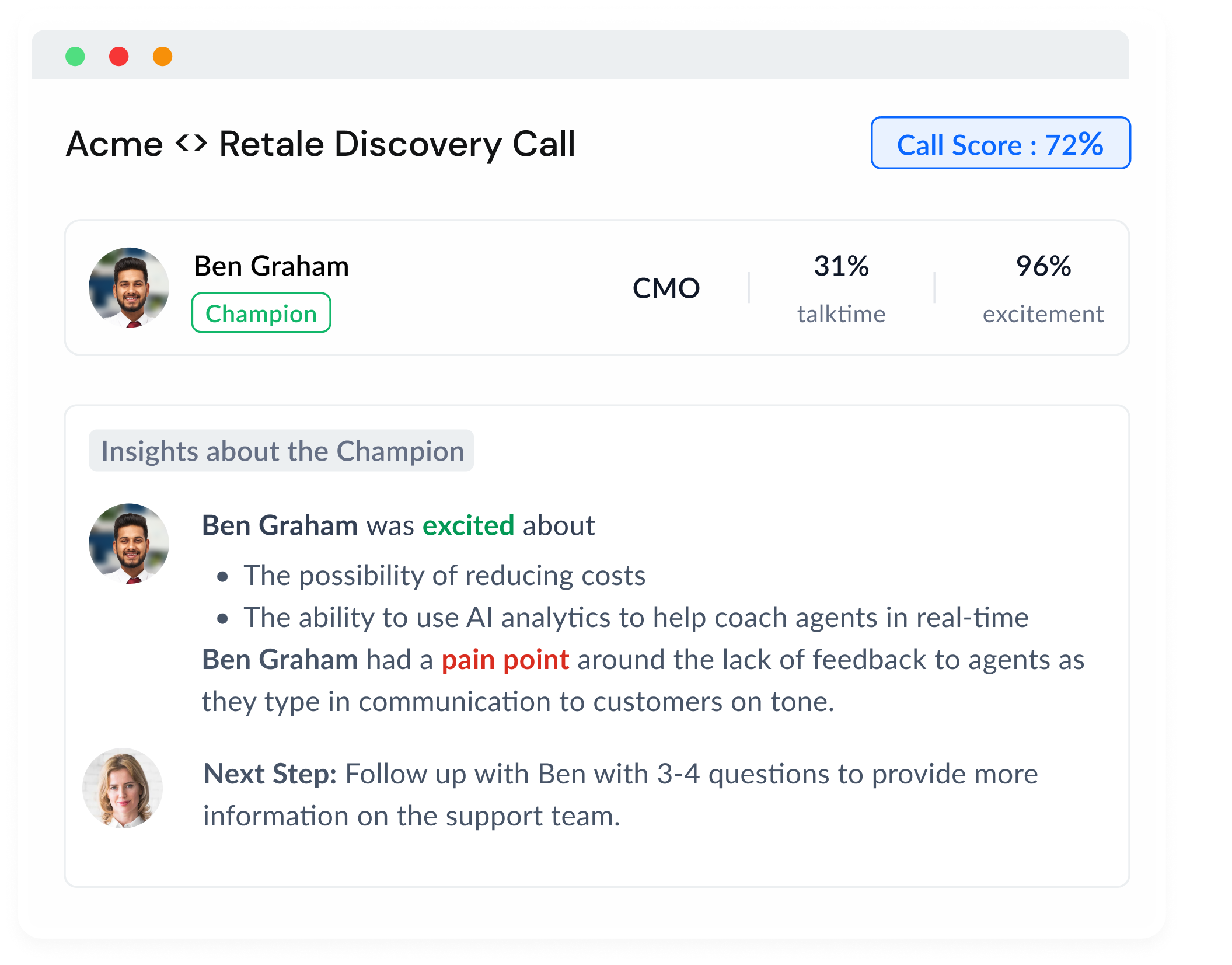Hear that? It's the sound of trumpets heralding your arrival in the arena of Challenger sales, where only the most fearless sales gladiators dare to tread! Are you ready to join their ranks and transform your sales game? In this action-packed guide, we'll reveal the secrets to mastering Challenger sales, so you can emerge victorious, ready to conquer the sales Colosseum. Onward, brave warrior!
Introduction
The Challenger Sales Model is a sales approach based on the research conducted by Matthew Dixon and Brent Adamson. The Challenger sales revolution began with a bang when the groundbreaking book, "The Challenger Sale," revealed a new sales archetype that outperforms all others, in which they presented in their book "The Challenger Sale: Taking Control of the Customer Conversation." The research identified five different sales rep profiles, among which the "Challenger" profile emerged as the most effective.
The Challenger Sales Model focuses on creating value for customers by teaching them something new about their business, tailoring the sales pitch to the customer's unique needs, and taking control of the conversation to guide customers towards the best solution. The model emphasizes the importance of understanding the customer's challenges and priorities, and then challenging their preconceived notions to reshape their thinking.
Let's embark on an epic journey to embrace your inner sales gladiator and unlock the full potential of Challenger sales!
The Five Key Characteristics of Challenger Salespeople
To harness the power of Challenger sales, you must first master its five core characteristics. Behold the pillars of sales gladiatorial greatness:
Teach
As a Challenger, your mission is to educate your prospects with valuable insights that reshape their thinking. Remember, knowledge is power—and in the sales arena, it's your most potent weapon.
Challenger sales reps provide valuable insights to their customers that help them view their problems or challenges from a different perspective. They bring industry knowledge, data-driven insights, and thought-provoking ideas to the conversation.
Tailor
Flexibility is key! Adapt your approach to suit each prospect's unique needs and preferences. Research shows that 79% of business buyers say it's critical for sales reps to personalize their interactions.
Challengers adapt their messaging to resonate with individual customers by understanding their unique pain points, priorities, and goals. They connect their solution to the specific needs of each customer and emphasize the benefits that are most relevant to them.
Take control
Assertiveness is a hallmark of Challenger sales gladiators. Take the lead in conversations, push back when necessary, and guide your prospect towards a solution that benefits both parties.
Challenger reps are assertive and take control of the sales process, guiding the conversation towards the desired outcome. They are not afraid to challenge the customer's thinking or push back on their assumptions, creating constructive tension that helps drive the customer to make a decision.
Build tension
Challengers thrive in the heat of battle. Create constructive tension by challenging your prospect's beliefs and encouraging them to think differently.
Solve problems
Position yourself as a trusted advisor by focusing on solving your prospect's problems. After all, 74% of buyers choose the sales rep that was first to add value and insight.
The Challenger Sales Model is particularly effective for:
- B2B sales: In business-to-business sales, the decision-making process is often more complex, and prospects may have a deeper understanding of their industry and challenges. The Challenger Sales Model's consultative and insight-driven approach is well-suited for engaging knowledgeable buyers and addressing their sophisticated needs.
- Complex or high-value sales: For sales involving complicated or high-value products and services, the Challenger approach helps sales reps navigate intricate customer needs and provide tailored solutions. By educating and challenging customers with valuable insights, sales reps can demonstrate the unique benefits and value of their offerings.
- Solution-based sales: In situations where sales reps are selling a solution rather than a specific product, the Challenger Sales Model enables them to position themselves as problem solvers and trusted advisors, helping customers overcome challenges and achieve their goals.
- Sales teams targeting well-informed buyers: With access to more information than ever before, buyers are increasingly knowledgeable about their options and potential solutions. The Challenger Sales Model equips sales reps with the skills to engage these well-informed buyers by teaching them something new and challenging their preconceived notions.
- Competitive industries: In highly competitive markets, where products and services may appear similar to prospects, the Challenger Sales Model can help sales reps differentiate themselves by providing unique insights and tailored solutions.
While the Challenger Sales Model can be effective across various industries and roles, it's crucial to adapt the approach to each sales situation and prospect. The model may not be suitable for every circumstance or buyer; sales reps should remain flexible and ready to adjust their strategy based on the specific needs and preferences of their customers.
Step-by-Step Guide to Mastering Challenger Sales
Now that you've familiarized yourself with the pillars of Challenger sales, it's time to learn the tactics that will propel you to sales gladiatorial greatness:
Research your prospect thoroughly
Knowledge is your greatest weapon. Delve deep into your prospect's company, industry, and challenges to understand their unique needs and arm yourself with valuable insights.
Reframe your prospect's mindset
Challenge your prospect's assumptions and shift their perspective by presenting a new way of thinking. This will set the stage for a memorable, impactful conversation.
Develop insightful and provocative questions
Craft thought-provoking questions that push your prospect to consider new possibilities and uncover hidden opportunities.
Be assertive, not aggressive
There's a fine line between assertiveness and aggression. Stand your ground, but do so with respect and empathy, lest you alienate your prospect.
Personalize your value proposition
Tailor your message to demonstrate how your solution specifically addresses your prospect's needs, goals, and pain points.
Standard Practices for Challenger Sales Success
To truly excel in the Challenger sales arena, adopt these proven practices:
Constantly develop your industry expertise
Stay ahead of the competition by continuously expanding your knowledge and expertise. This will empower you to provide prospects with valuable, up-to-date insights.
Build a comprehensive sales toolkit
Equip yourself with a range of resources, like case studies, whitepapers, and testimonials, to support your insights and enhance your credibility.
Cultivate a problem-solving mentality
Adopt a solutions-oriented mindset and focus on helping your prospects overcome challenges and achieve their goals.
Harness the power of storytelling
Stories have the power to captivate, engage, and inspire. Weave compelling narratives that illustrate the benefits of your solution and resonate with your prospect on an emotional level.
Tips and Tricks to Maximize Your Challenger Sales Impact
Know when to switch gears
Not all prospects respond well to the Challenger approach. Develop the ability to recognize when it's time to adjust your strategy and try a different tactic.
Practice empathy and active listening
Listen carefully to your prospect's concerns and demonstrate genuine empathy. This will help you build trust and create a stronger connection.
Leverage social proof and case studies
Back up your claims with real-world examples, testimonials, and case studies that prove your solution's value and effectiveness.
Embrace the power of collaboration
Sales is not a solo sport. Collaborate with colleagues, mentors, and experts to refine your Challenger skills and gain valuable insights that will give you the edge in the sales arena.
How to introduce it to your team
Transforming your sales team into Challengers involves a shift in mindset, training, and ongoing support to help them adopt the Challenger Sales Model effectively. Here are some steps to guide you in turning your sales team into Challengers:
- Education and awareness: Introduce your sales team to the Challenger Sales Model by sharing the core principles, benefits, and real-life examples of how the approach has improved sales performance. You can leverage resources such as books, articles, or even bring in an expert to conduct a workshop on the topic.
- Assess your sales team: Identify the current sales profiles within your team, their strengths, and areas for improvement. Determine who is best suited to adopt the Challenger approach and who might need additional coaching or support.
- Provide targeted training: Develop a comprehensive training program that covers the key aspects of the Challenger Sales Model, including research and preparation, engaging and teaching prospects, challenging assumptions, tailoring the message, and taking control of the conversation. Encourage role-playing exercises and real-life scenarios to help your team build practical skills.
- Encourage a culture of learning: Create an environment where continuous learning is valued and rewarded. Encourage your sales team to stay up-to-date on industry trends, market insights, and customer needs. Share knowledge and best practices within the team to foster a sense of camaraderie and collective growth.
- Develop a coaching and mentorship program: Pair experienced Challengers with those who are new to the approach. Regular one-on-one coaching sessions and constructive feedback can help sales reps refine their Challenger skills and address any challenges they face.
- Offer the right tools and resources: Equip your sales team with the necessary tools and resources to help them succeed as Challengers. This might include access to market research, customer data, industry insights, and a repository of content to use in their sales conversations.
- Set clear expectations and goals: Communicate your expectations for adopting the Challenger Sales Model and set specific, measurable goals for your sales team to achieve. Track progress, recognize improvements, and celebrate successes to maintain motivation and enthusiasm.
- Monitor and adjust: Regularly review your sales team's performance using key performance indicators (KPIs) relevant to the Challenger approach, such as the quality of insights shared, tailored solutions, and sales outcomes. Use this data to identify areas for improvement, refine your training programs, and make any necessary adjustments.
Transforming your sales team into Challengers takes time, effort, and a commitment to continuous improvement. By investing in your team's development and fostering a supportive learning environment, you can empower your sales reps to excel in the Challenger Sales Model and drive better sales results.
Conclusion
Congratulations, brave sales gladiator! You've successfully navigated the treacherous terrain of Challenger sales and emerged victorious, armed with the knowledge and skills to conquer the sales world. But remember, the journey doesn't end here.
As you continue your quest for sales excellence, never stop honing your craft and challenging the status quo. By doing so, you'll rise through the ranks of the sales Colosseum, and one day, stand proudly as a true Challenger sales legend. So go forth, fearless warrior, and seize the sales glory that awaits you!















.png)





